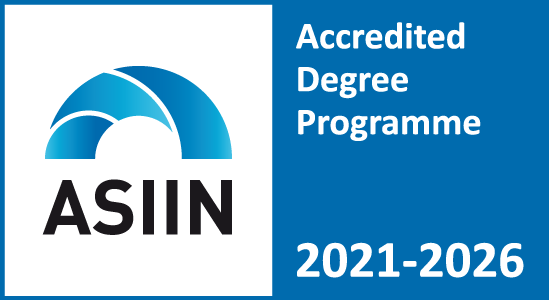| 1. | Course Title | Modeling and Simulation – Performance Assessment | |||||||||||
| 2. | Code | 4ФЕИТ11004 | |||||||||||
| 3. | Study program | 7-NKS, 8-KM-INN | |||||||||||
| 4. | Organizer of the study program (unit, institute, department) | Faculty of Electrical Engineering and Information Technologies | |||||||||||
| 5. | Degree (first, second, third cycle) | Second cycle | |||||||||||
| 6. | Academic year/semester | I/1 | 7. | Number of ECTS credits | 6.00 | ||||||||
| 8. | Lecturer | Dr Sanja Atanasova | |||||||||||
| 9. | Course Prerequisites | ||||||||||||
| 10. | Course Goals (acquired competencies):
Gaining knowledge in the area of analytical modeling and simulations of computer-communication systems. In-depth knowledge in the field of systems performance assessment. Knowledge of process modeling using queuing systems, Markov chains and Petri nets. Application of acquired knowledge in real practical computer-communication systems and networks of all possible types. |
||||||||||||
| 11. | Course Syllabus:
General theory of queuing systems. Simple single and multi-server queuing systems. Medium-complex single- and multi-server queuing systems. Complex single and multi-server queuing systems. Self-similar processes and their characteristics. long-range interdependence and long-tailed distributions. Waiting networks. Devices and systems where it is possible to apply analysis with waiting systems and networks. Discrete-event simulators and analytics resources. Typical practical examples. Recovery processes. Discrete and Composite Markov Chains: Application. Warranty processes. General characteristics of graphs, shortest path problem, effects of multicast and number of hops in an anycast group. Advanced Chapters in Simulation Modeling. Petri nets. Procedure for creating a simulation. Processing and interpretation of simulation results. |
||||||||||||
| 12. | Learning methods:
lectures and presentations |
||||||||||||
| 13. | Total number of course hours | 180 | |||||||||||
| 14. | Distribution of course hours | 3 + 3 | |||||||||||
| 15. | Forms of teaching | 15.1 | Lectures-theoretical teaching | 45 hours | |||||||||
| 15.2 | Exercises (laboratory, practice classes), seminars, teamwork | 45 hours | |||||||||||
| 16. | Other course activities | 16.1 | Projects, seminar papers | 30 hours | |||||||||
| 16.2 | Individual tasks | 30 hours | |||||||||||
| 16.3 | Homework and self-learning | 30 hours | |||||||||||
| 17. | Grading | ||||||||||||
| 17.1 | Exams | 10 points | |||||||||||
| 17.2 | Seminar work/project (presentation: written and oral) | 40 points | |||||||||||
| 17.3. | Activity and participation | 20 points | |||||||||||
| 17.4. | Final exam | 30 points | |||||||||||
| 18. | Grading criteria (points) | up to 50 points | 5 (five) (F) | ||||||||||
| from 51 to 60 points | 6 (six) (E) | ||||||||||||
| from 61 to 70 points | 7 (seven) (D) | ||||||||||||
| from 71 to 80 points | 8 (eight) (C) | ||||||||||||
| from 81 to 90 points | 9 (nine) (B) | ||||||||||||
| from 91 to 100 points | 10 (ten) (A) | ||||||||||||
| 19. | Conditions for acquiring teacher’s signature and for taking final exam | none | |||||||||||
| 20. | Forms of assessment | through homework, tests and preparation of seminar papers | |||||||||||
| 21. | Language | Macedonian and English | |||||||||||
| 22. | Method of monitoring of teaching quality | Self-evaluation | |||||||||||
| 23. | Literature | ||||||||||||
| 23.1. | Required Literature | ||||||||||||
| No. | Author | Title | Publisher | Year | |||||||||
| 1. | J. Daigle | Queueing Theory with Applications to Packet Telecommunications | Springer | 2004 | |||||||||
| 2. | G. Bolch, S. Greiner, H. deMeer, K. Trivedi | Queueing Networks and Markov Chains: Modeling and Performance Evaluation with Computer Science Applications | John Wiley | 2006 | |||||||||
| 3. | A. M. Law, W. D. Kelton | Simulation Modeling and Analysis | McGraw-Hill | 2000 | |||||||||



